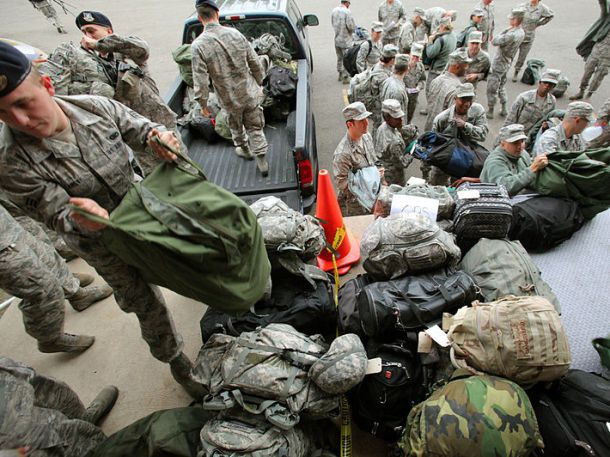
Just days after Sandy left large areas of the East Coast and NYC devastated, clean up, rescue, and recovery efforts are already in full swing. As the terrible cost of the storm becomes ever more apparent, relief efforts are being stepped up across the affected areas – and the need for volunteers and aid workers is growing.One of the most difficult tasks facing aid agencies is the organization and effective distribution of the food, supplies, fuel, and other necessary goods needed by those who were living in the storm’s path. With power outages still in effect for millions, shops remain closed in many areas and and gas stations are often unable to cope with the demand in these areas. New Yorkers living in uptown Manhattan might find it hard to believe, but a quick walk south of 40th Street should be enough to show the real and pressing needs of millions. In NYC, Staten Island in particular has been hit badly.Volunteering is a fantastic way to offer genuine and much needed help to those who need it. We recommend working with established agencies who have the means and the operational know-how to get what’s needed to the right places. Already in New York City there are plenty of ways to help. Apart from donations of money and the most needed items (tinned foods, clean clothes, bottled water, and fuel), giving up your time is now, more than ever, the best way to give back to the city. Being able to offer physical help for about eight hours at a time is best, and makes sure your attempts to help don’t end up hindering the efforts.Food Bank for New York City offers you the opportunity to donate through their website and sign up to volunteer to help out neighbors. They also have information on replacing lost food stamps. To best work out where you can be useful, their Food Program Locator can pinpoint soup kitchens, food pantries and senior centers near your location.The American Red Cross has information on volunteering for those 16 or older who can offer at least 12 hours in a NYC shelter. There is some heavy lifting required – about 50lbs – but they have opportunities across the five boroughsDisasterAssistance.gov, an official government site, is a great way to find the best way for you to help and volunteer. Google’s Crisis Map also lists the shelters by area, and many of these are sure to be open to donations and volunteers – call ahead to see what is most needed. The Lower East Side Recovers also has updated news and disaster relief information, along with ways you can help out on the LES.Blood is much needed. If you’re able to donate blood, see the information listed on the American Red Cross’ website on where and how to donate.While lists of in-demand goods are changeable and depend on the area, if you’re planning to donate items, it’s good to have the following in mind:• Flashlights and batteries – C and D particularly• Bottled water• Tinned fruit and vegetables• Adult clothes – especially underwear• Snack Foods – Granola Bars, Dried Fruit, Chips, etc.• Dried milk, lactose free milk, instant coffee, and tea bags• Puzzle books (Sudoku, Crosswords, Word Searches, etc.)• Children’s supplies – Formula, bottles, diapers, etc.• Toiletries – Shampoo, soap, towels, toothbrushes, toothpaste, women’s hygiene products, etc.Of course, all supplies should be new, clean, and in-date.The New York State Division of Homeland Security and Emergency Services has a great list of contacts and number to phone for the various different needs you may have.In New Jersey, the Emergency Volunteer Response Hotline (1-800-JERSEY-7 / 1-800-537-7397) is a good way to register your willingness to help out. The line is managed by the New Jersey Business Action Center and the Governor’s Office of Volunteerism. Both divisions are within the New Jersey Department of State.For information or answers to questions about volunteering or getting non-emergency help in your area call NYC’s info line at 311 (or text 311-692). Alternatively you can visit the NYC 311 website for already posted info.At all times, make sure your own safety isn’t compromised. Falling branches and power lines remain a problem across NY and NJ, and if you’re working in the hardest hit areas, take extra care to stay away from unstable buildings and exposed gas, power and sewage works.

